Photos: The First Dino Fossil Found in Washington
The finding of an 80-million-year-old femur bone has inducted Washington state into the dinosaur club, a new study finds. Researchers found the bone on the shores of Sucia Island, a part of the San Juan Islands, just north of Seattle. It's likely the thighbone of a theropod, a group of bipedal, mostly meat-eating dinosaurs that lived in North America during the Late Cretaceous. [Read the full story on the first dinosaur fossil discovered in Washington]
A first for the area
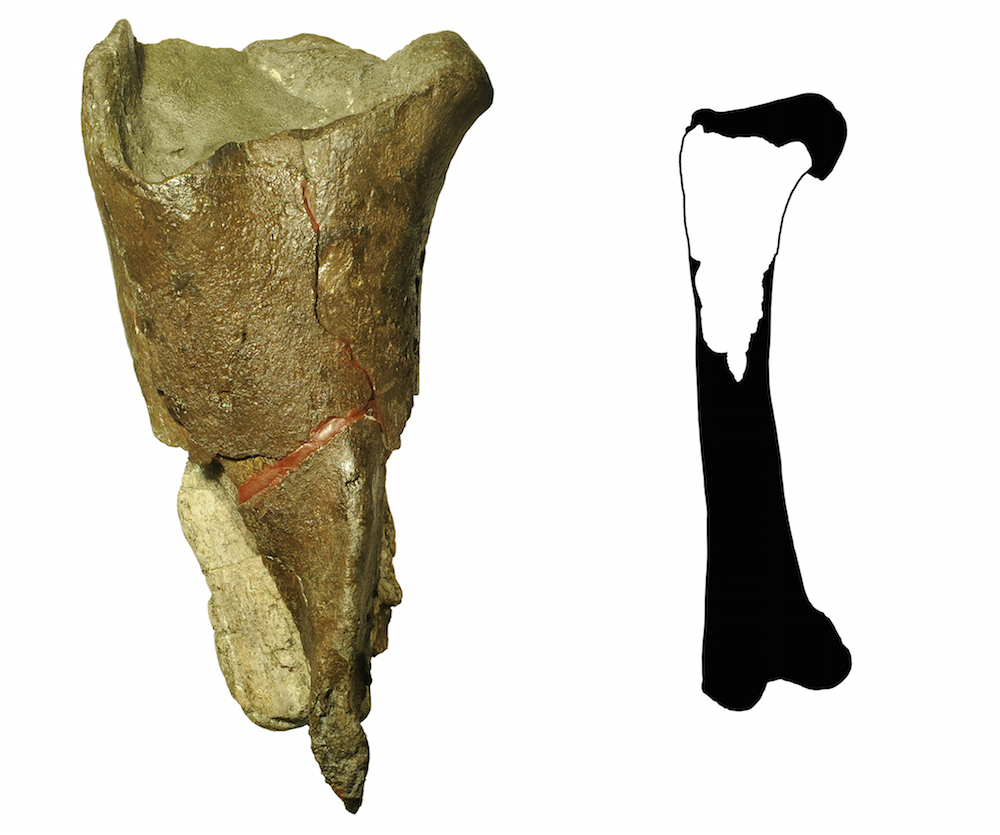
Researchers have identified the newfound fossil as the upper left femur (thighbone) of a theropod dinosaur. The illustration on the right shows the portion of the bone (in white) of the surviving fossil. (Image credit: Illustration courtesy of PLOS ONE, modified by the Burke Museum)
Fitting the puzzle together
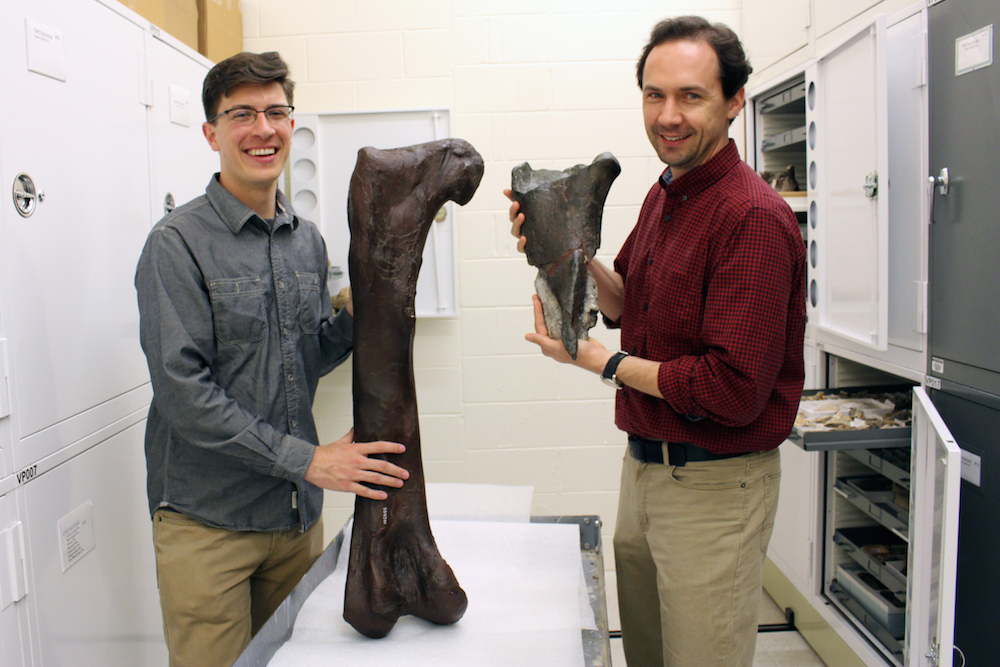
The study's two authors, Christian Sidor, Burke Museum curator of vertebrate paleontology, and Brandon Peecook, University of Washington graduate student, compare the recently found fossil (right) with a cast of a Daspletosaurus femur (left).
Daspletosaurus is a genus of tyrannosauroid theropod, a category that researchers suspect the fossil belongs to as well. (Image credit: Courtesy of the Burke Museum)
A unique feature
Sign up for the Live Science daily newsletter now
Get the world’s most fascinating discoveries delivered straight to your inbox.
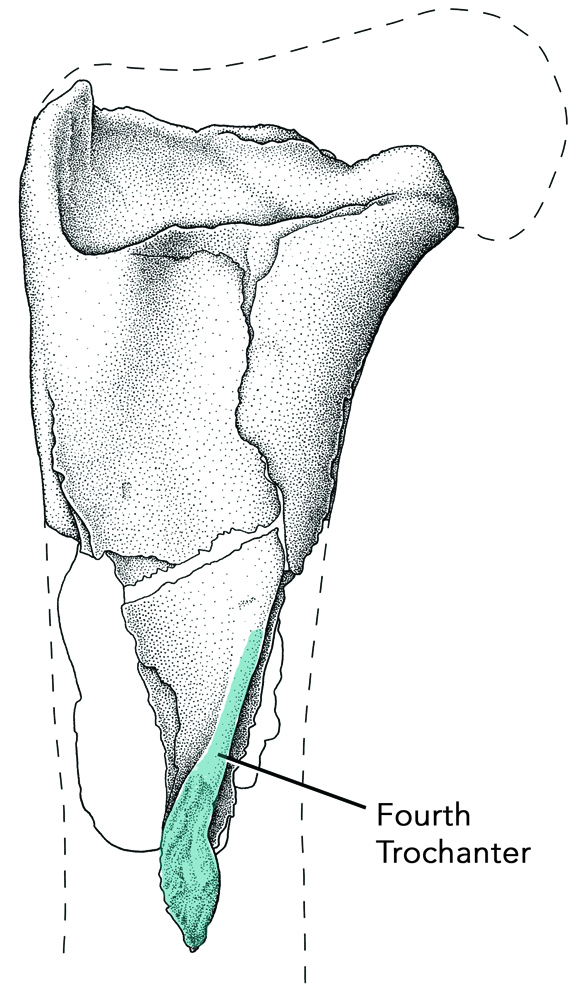
This illustration shows the first dinosaur fossil found in Washington. The highlighted blue area showed the fourth trochanter, an anatomical feature on the surface of the bone, which is prominent and positioned closely to the hip. The fourth trochanter, together with the fact that the bone was once hollow, suggests the bone belonged to a theropod dinosaur, the researchers said. (Image credit: Illustration courtesy of PLOS ONE, modified by the Burke Museum)
First look
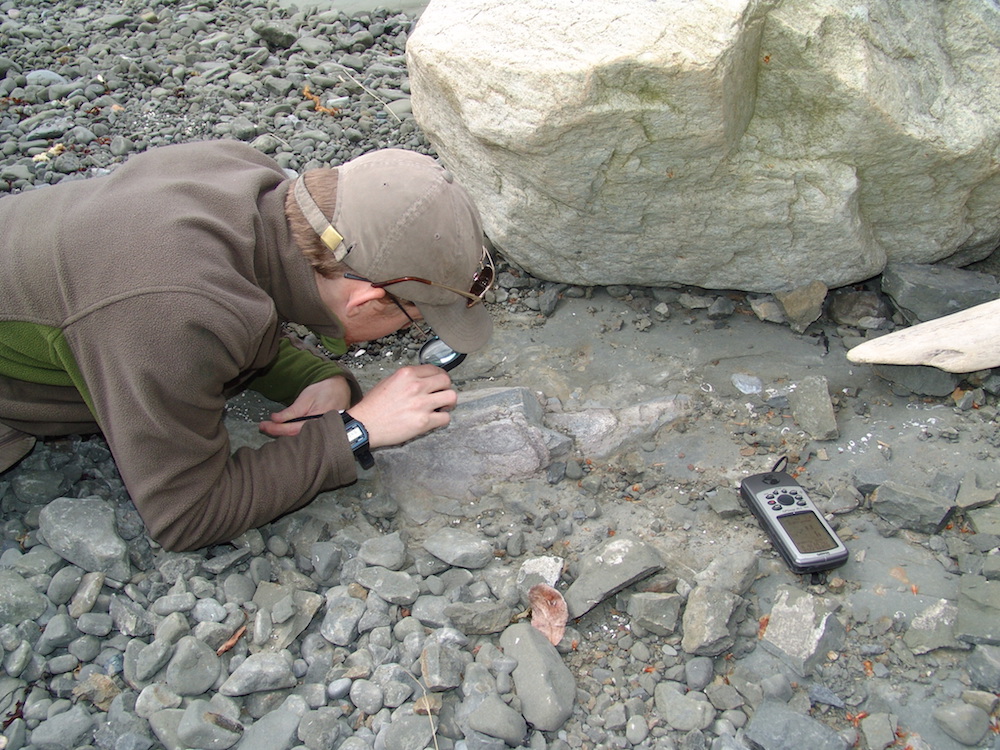
The fossil, embedded in marine rock at Sucia Island State Park in the San Juan Islands, gets a look by Adam Huttenlocker, at the time a University of Washington graduate student and Burke Museum paleontologist. (Image credit: Courtesy of the Burke Museum)
Evidence of the final resting place
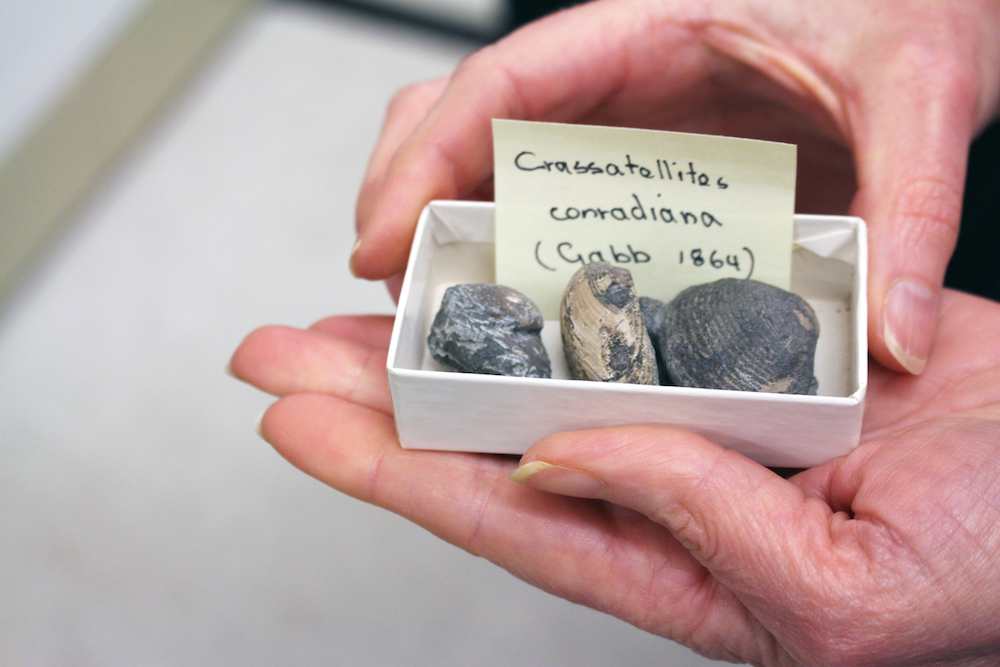
Researchers found the fossilized remains of prehistoric clams, Crassatellites conradiana, inside the hollow part of the dinosaur bone. It's known that these clams lived in shallow water, so the researchers hypothesized that the dinosaur died near the sea and that its body was tossed by the waves before it came to rest among the clams. (Image credit: Courtesy of the Burke Museum)
The target
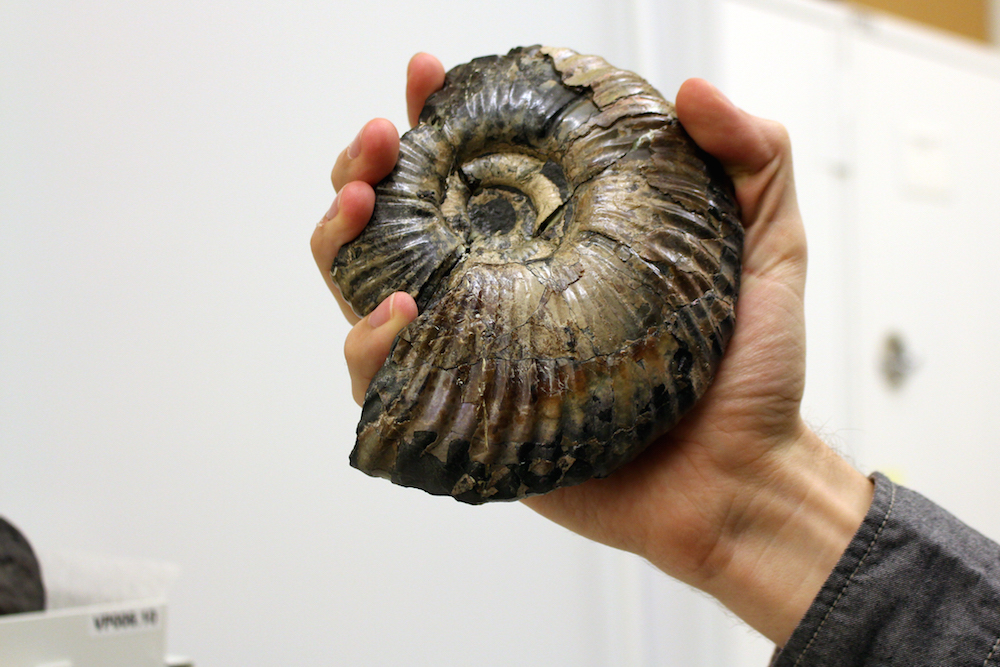
Before they found the dinosaur fossil, Burke Museum paleontologists were looking for ammonite fossils (such as the one pictured here) on the beaches of Sucia Island. (Image credit: Courtesy of the Burke Museum)
Follow Laura Geggel on Twitter @LauraGeggel. Follow Live Science @livescience, Facebook & Google+.

Laura is the archaeology and Life's Little Mysteries editor at Live Science. She also reports on general science, including paleontology. Her work has appeared in The New York Times, Scholastic, Popular Science and Spectrum, a site on autism research. She has won multiple awards from the Society of Professional Journalists and the Washington Newspaper Publishers Association for her reporting at a weekly newspaper near Seattle. Laura holds a bachelor's degree in English literature and psychology from Washington University in St. Louis and a master's degree in science writing from NYU.









